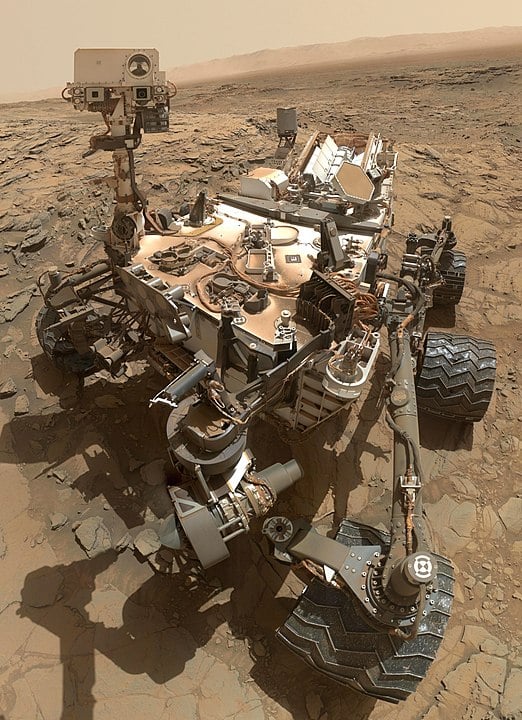There’s a Large Hole in the Wheel of NASA’s Mars Curiosity Rover

Twelve years of rolling around on Mars has apparently taken its toll on NASA’s Curiosity rover after photographs showed a large hole in the middle of one of its wheels.
Curiosity landed on Mars on August 5, 2012, and was expected to last for two years but it has defied expectations and has been studying the area around the Gale Crater — its landing site — for over a decade.
But all that time spent exploring unchartered territory has caused a large hole in the tire. Despite this, a missions operations engineer at NASA’s Jet Propulsion Laboratory says the rover “is still holding up well despite taking some of the worst abuse from Mars”.
Two photos have been released of the damaged wheel which were taken by the rover’s “hand lens imager” which is attached to the end of its robotic arm. The camera primarily examines objects on the Martian surface at close range. It was designed to function like a geologist’s hand lens, providing highly detailed images of rock textures, soil, and dust, much like how geologists on Earth examine rock features in the field.

Curiosity has six wheels and the damaged one is its middle-right wheel. NASA periodically checks for wear and tear and the photos were part of these examinations. Despite the damage, the rover is expected to continue with its mission. In fact, Space reports that Curiosity’s wheels have shown signs of wear since 2013 and damage is to be expected given it is a one-ton machine rolling over rough terrain which includes jagged rocks.

The Curiosity rover’s main objective is to determine whether Mars has ever been able to support small life forms such as microbes while also gaining a better understanding of Mars’ climate and geology.
But thanks to its onboard cameras it’s been able to capture unique and captivating photos such as the first-ever photo of Earth and the Martian moon Phobos together as seen from Mars; a 318-megapixel selfie that depicts Curiosity in front of Mont Mercou, a rock outcropping on the surface of Mars; and the first ever images of sun rays shining through the clouds during a Martian sunset.